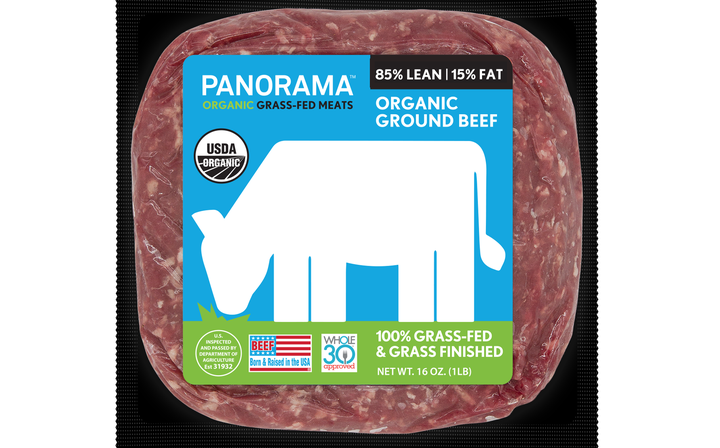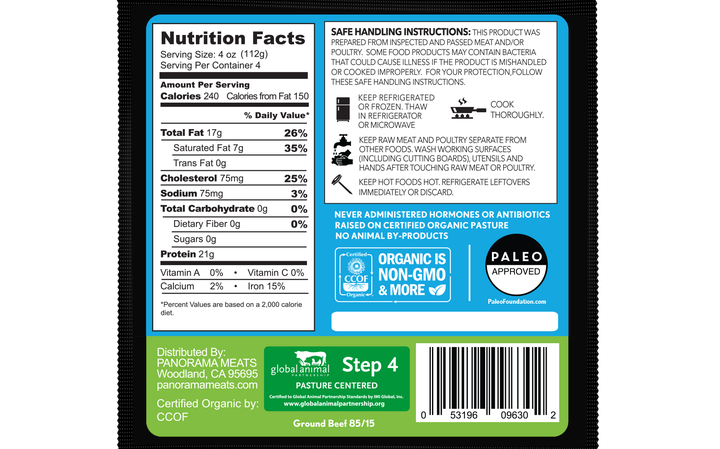If you’re looking for a great steak these days, you’re not only looking for succulence but also a piece of meat with premium nutrition that didn’t come from an animal-abusing, earth-polluting factory farm.
Grass fed beef, from animals that only grazed on grass their entire lives, is unique because it provides all of these qualities in every cut. This is why the market for grass fed beef has been soaring with double-digit growth over the past several years, according to industry sources.
So, while it’s still uncommon, grass fed beef is easier than ever to find in grocery stores. However, the premium price for beef in the grass fed market, which reached $480 million this year, means that some marketers are labeling their product as “grass fed” when it really isn’t. Short of going to the farm yourself, how are you supposed to know what’s real and what’s not?
Fortunately, there are simple ways to cut through the marketing bull. Here’s what you need to know next time you’re shopping for a grass fed rib-eye.
What Grass Fed Really Means And Why
Genuine, grass fed beef comes from animals that lived on pasture, foraging on nothing but grasses, from birth to harvest. According to the strict standards of the American Grassfed Association, which offers a certification program for producers, that’s the main requirement.
Simple, right? But the beef supply system gets complicated. You see, almost every animal raised for beef is grass fed for most of its life. But it’s the last few months, the phase called “finishing,” that makes a difference.
Nearly all beef cattle in the U.S. ― 95% ― are finished on rations that include food waste, silage and grains in feedlots known as concentrated animal feeding operations. The remaining 5% of grass fed cattle remain on pasture eating fresh or stored grasses. The American Grassfed Association discounts hard numbers about the size and value of the grass fed market because no one tracks “authentic all-grass fed all the time” versus beef labeled “grass fed,” according to executive director Carrie Balkcom.
Trouble is, there is no federal government standard or enforcement for any grass fed label. On top of that, most of the grass fed beef sold at Walmart and other major chains is imported from Australia, Uruguay or other countries, but may still be labeled product of the USA. It’s hard to know what you’re getting.
Instead of drilling into the meaning of every label, let’s focus on the big picture first. Grass fed beef is all about the grass. When cattle eat only native forages, they upcycle the nutrients, including omega 3 essential fatty acids, conjugated linoleic acid, and antioxidants like beta-carotene and vitamin E. Grain fed cattle ― even certified Angus and wagyu ― don’t.
Another critical difference is that cattle raised for the grass fed market graze. Since they’re not in feedlots, they get regular exercise that results in leaner, firmer beef. They also spend their lives living, well, like cattle, without contributing as much to the major health, land and water impacts of factory farming.
Finally, since it takes more land and more time, grass fed beef costs more, which you see in store prices that are about 70% higher than for regular beef. It is this combination of surging popularity and market opportunity that results in rampant sales of “fake” grass fed beef.
Grass Fed Isn’t Always 100% Grass Fed
Portland, Oregon, butcher Camas Davis told HuffPost that she commonly sees beef advertised as grass fed in the supermarket, when she knows it’s grain finished.
“I know because I always ask,” Davis said. She is the founder of The Good Meat Project, offering butcher and slaughter workshops to help people learn how meat gets to their tables. “If they’re not saying it’s 100% grass fed, I almost always assume that it’s grain finished,” she said.
Davis doesn’t think the labels are intentionally misleading, but rather that there’s a lot of misunderstanding. “I think a lot of times the grass fed label is thought of by producers and consumers to mean animals just roaming around in grass,” she said.
How prevalent is beef mislabeling in the grass fed world? It’s “hard to say for sure,” said Balkcom of the American Grassfed Association. The group has obtained reports of misleading labels from the U.S. Department of Agriculture, and Balkcom said it appears “a very large number” of grass fed claims are deceptive.
The grass fed label is “ill-defined and open to abuse,” says a 2017 report by Stone Barns Center for Food and Agriculture, a nonprofit that promotes sustainable agriculture. The report points out that some cattle that spend only half their lives on pasture can qualify as grass fed, as do cattle that live on pasture full time and are fed grains during finishing. It cites the egregious example of a grass fed claim for feedlot cattle that were fed grass pellets.
How To Avoid Buying ‘Fake’ Grass Fed Beef
Industry experts warn consumers against trusting any grass fed label that is not backed by a third-party certification. American Grassfed Association’s certification, for example, includes a stringent definition. Like other certification programs, however, it is voluntary for producers. The group A Greener World also has a Certified Grassfed standard that guarantees the animals are grass fed and are raised with higher animal welfare standards.


For those who want to decode the bewildering array of labels, A Greener World’s app, Food Labels Exposed, guides you through 100 claims that might be made by beef in the store, including three common terms that should tip you off that it isn’t pure grass fed: “natural,” “vegetarian fed” and “pasture raised.”
Another option is to become loyal to a brand you know is trustworthy. For example, Panorama Meats sells organic-certified 100% grass fed beef.
Surprisingly, organic certification alone does not guarantee pure grass fed beef. The USDA organic seal only promises that the animals had seasonal access to pasture and that their feed was organic. Panorama is certified by the Global Animal Partnership, a program Whole Foods also uses that can steer you toward true grass fed beef.
Other grocery stores vet brands that meet their standards for grass fed beef, so ask if it’s not clear. But Balkcom cautioned that meat department managers aren’t always the best resources. “But you as the consumer can make them find out,” she said.
Finding out where the beef comes from is key, according to Davis. But the best way to become a more inquisitive and informed meat consumer, she said, is through hands-on experiences, like butchering workshops.
“Most people think that all meat is created equal,” Davis said. But after a workshop, people revalue meat. “They learn that there’s a different way of raising meat that could be good for our planet and better for the animals and better for our own bodies,” she said.
